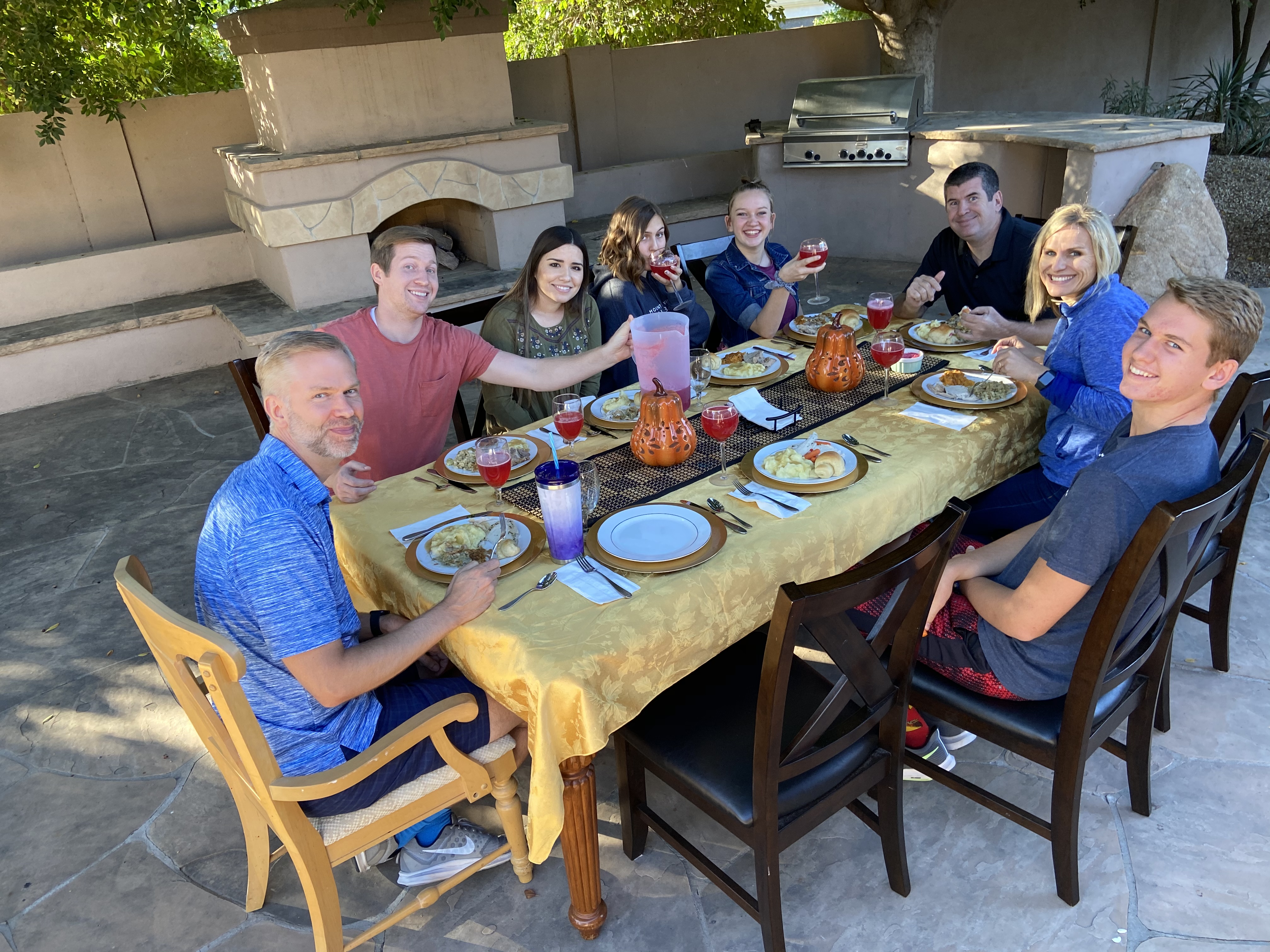Good manners tend to be a distinguishing factor between those who could be at ease in several settings versus those who may go into panic mode if invited to a formal dinner or an interview over lunch. I realize this information is for people of all ages and yes I do think you can teach your 3 year old! It takes time to learn to sit up at the dinner table, use a napkin, chew with your mouth closed and engage in delightful conversation. Consistency of example and kindly teaching over time, you can prepare your peeps of any age to be successful in multiple eating scenarios!

I will address the ideal scenario for manners, but I do know that a pizza party or camping has a much different level of formality for manners than even a nightly family dinner. How great there is variety! Some manners are necessary in every eating situation. Nobody wants to see the food in your mouth, so plan to keep it closed while you chew whether you are camping or at dinner with the queen of England. If you can conquer these 10 items, you will be at ease in almost every meal scenario.

- No cell phone, devices, toys or books at the table (and no TV). You are at the table to eat and connect with the people there. Everything else is a distraction. Several studies have been conducted about the diminishing of conversation with a device on the table. Connect with the people in your lives! One psychologist in a Harvard interview said she would be out of a job if families ate dinner together, because connection with your loved ones is so vital to your health on a physical, social, and mental level. No toys at the table. 🙂

2. Sit up, and place your napkin and hands in your lap. Many people will say “No elbows on the table.” This is true, actually you should not be putting your head, elbows or your feet on the table. The true rule of thumb for the eating portion of the meal is to sit up to easily engage in eye to eye conversation. Start by placing your napkin in your lap and placing your hands there too allows for your body to relax without being tempted to lean and droop on the table. Of course you will lift your hands to the utensils in a matter of moments to actually eat your food. Did you know that after the dinner is over you can nudge your plate forward and then it is acceptable to rest your hands on the table with friends and family! Hooray! In a true formal situation, it is best to keep your hands in your lap as a home base. Do you speak with your hands moving? That’s okay to be yourself, just when they rest, bring them back to your lap.

3. Consider your bite size. Many of the rules of dining etiquette revolve around the ability to connect in conversation. Thus your bite size should be moderate. Meaning clearly we know you could cram that entire pancake in your mouth, but that would halt all conversation while we observe your life and death struggle to chew, swallow and breath. So use your fork and knife and keep your bite sizes medium to small so we can engage in conversation with you while we all enjoy our food.
4. Chew with your mouth closed. Always. Every time. And if your mouth is closed, you will have to wait to speak. We understand. We will await you and continue in conversation. You can still amiably nod, and grin with a closed mouth. If your bite was too big, go for smaller next time. There is no race.

5. Ask politely for things to be passed to you. Please, thank you and excuse me are words definitely used successfully at the table. When you need something such as salsa or salt, you simply ask. When you ask in a group of more than 5 people you will be more successful if you use the person’s name where the desired item is closest. For example: “Mom, will you please pass the syrup?” Then a “Thank you” will always be in order. If someone has asked for the syrup, but you were about to use it, you can simply ask “May I use it first before I pass it to you?” The polite answer is “yes.” Practice, practice, practice until this feels happily normal.

6. Grateful comments about the food! Chances are someone worked to prepare what you are eating. Express gratitude in your own home and the home of others. What if this is not your favorite food? This is a likely possibility. Do you remember the 1st grade rule “If you don’t have anything nice to say, don’t say it at all” That still applies here. Have you just been served shrimp and you are allergic? Well please do not die in the name of etiquette. Please softly and kindly speak up with something like. “Wow, this looks amazing, however I am actually allergic to shrimp.” Chances are they have not created 2 meals, so you will find a compromise, such as more salad and bread or the like. Telling people about your allergies is fine and certainly necessary, but then dominating the conversation about the medical responses of your body is not a polite conversation. Expressing gratitude is a mark of emotional maturity, the ability to recognize the efforts of others.

7. Use the utensils. Yep. That’s what they are there for. If you are at a table with many utensils remember to start at the outside and work your way in for each course. For example, the salad fork is on the far left, whereas the entrée fork is closer to the plate. What are considered finger foods? A happy trick is to watch the host of the dinner. If they are using their fork and knife, then you should too. Pizza, hamburgers, street tacos and many hor d’oeuvres are considered finger foods, but you can use your fork and knife if desired. Use your fork and knife if there are sauces or the perceived finger food looks like it might drip all over you. Yea for utensils!

8. The napkin is your friend. You can blot your mouth, cover your mouth or rid your mouth of contents that you do not wish to swallow, such as a bone or other unpalatable items. Start with your napkin on your lap and return it there in between use.

9. Careful of your noise. Slurping, burping, and speaking too loud will get you remembered for all the wrong reasons. Slowing down a little bit will help you avoid any of these pitfalls. Don’t suck in your soup, just place the spoon in your mouth. Easy! What if it takes you 60 seconds more to eat your soup? Seems like a welcome trade for politeness. Now, what if you really do need to belch?
Well then, you must be human!
If you lean your chin down to your chest slightly and cover your mouth, you will see you can release the air quietly without making a spectacle. I’m sure there will be times to show off your belching prowess, but it will not be at the dinner table. Many people speak of the countries where a loud burp is a sign of respect. I have visited a fair number of countries and still haven’t come across that one!

10. Conversation: The dinner table is a place to ideally eat nourishing food and connect with your loved ones. Learn to converse! A large part of conversation is listening. In our home we have experimented with lots of ways to engage conversation with everyone of a variety of ages. When our children were small and everyone wanted to speak at once, we would pass a wooden spoon giving each person the chance to say one or two things about their day. The person who held the spoon had a turn to speak. This helps the 4 year old to wait their turn and also to listen to a sibling. Soon we moved to “Highs and Lows” allowing everyone to go around the table and voice the worst and the best part of their day. This was often illuminating for me, when my kiddos opened up about hard and wonderful things. At one point we added: High, Low and Service. We also have used “Conversation Starters,” (which I personally love and stay tuned, we will definitely create a post about those!) When going to dinner with friends or during an interview, part of listening would be to restate part of what you heard. This shows comprehension and that you have people skills. If you practice these conversation skills in your own home, they will become part of your skill set for you and your children.

Turns out we eat every day! There will be times when you are racing to soccer practice or choir rehearsal and quickly eating some food in the car on the way, but hopefully you have many opportunities to sit with your family and connect. If this list of 10 seems overwhelming, then break it down into bite size lessons. A little bit at a time is the best way to take in food and learn etiquette! 🙂


